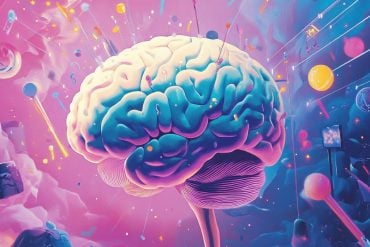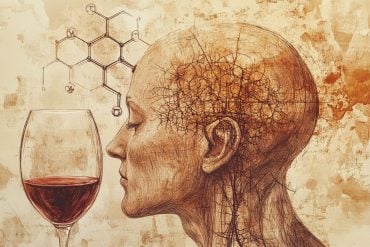Summary: Deep brain stimulation of newborn hippocampal neurons restored both cognitive and non-cognitive function in mouse models of Alzheimer’s disease.
Source: Cell Press
People with Alzheimer’s disease develop defects in cognitive functions like memory as well as problems with noncognitive functions that can lead to anxiety and depression.
In a paper published April 6 in the journal Cell Stem Cell, investigators used mice to study a process through which new neurons are generated in adulthood, called adult hippocampus neurogenesis (AHN).
The research showed that deep brain stimulation of new neurons helped restore both cognitive and noncognitive functions in mouse models of Alzheimer’s disease.
“We were surprised to find that activating only a small population of adult-born new neurons was enough to make a significant contribution to these brain functions,” says senior author Juan Song, an associate professor at the University of North Carolina at Chapel Hill. The neurons were modified by deep brain stimulation of the suprammamillary nucleus (SuM), which is located in the hypothalamus.
“We are eager to find out the mechanisms that underlie these beneficial effects,” Song says.
This research used two distinct mouse models of Alzheimer’s. The investigators used optogenetics to stimulate the SuM and enhance AHN in Alzheimer’s mice. Their earlier research had shown that stimulation of the SuM could increase the production of new neurons and improve their qualities in normal adult mice.
In the new study, the investigators showed that this strategy was also effective in the Alzheimer’s mice, leading to the generation of new neurons that made better connections with other parts of the brain.
However, having more improved new neurons is not enough to improve memory and mood. Behavioral improvement in Alzheimer’s mice were seen only when these improved new neurons were activated by chemogenetics.
The researchers used memory tests as well as established assessments to look for anxiety-like and depression-like behavior to confirm these improvements.

The results suggested that multi-level enhancement of new neurons—enhancement in number, properties, and activity—is required for behavioral restoration in Alzheimer’s brains.
To further understand the mechanism, they also analyzed the protein changes in the hippocampus of Alzheimer’s mice in response to activation of SuM-modified adult-born new neurons.
They found several well-known protein pathways activated inside cells, including those known to be important for improved memory performance, as well as those that allow clearance of the plaques related to Alzheimer’s.
“It was striking that multilevel enhancement of such a small number of adult-born new neurons made such a profound functional contribution to the animals’ diseased brains,” Song says. “We were also surprised to find that activation of SuM-enhanced neurons promoted the process that can potentially remove plaques.”
Future efforts of the team will focus on developing potential therapeutics that mimic the beneficial effects mediated by activation of SuM-modified new neurons. “We are hoping these drugs could exert therapeutic effects in patients with low or no hippocampal neurogenesis,” Song says. “Ultimately, the hope is to develop first-in-class, highly targeted therapies to treat Alzheimer’s and related dementia.”
Funding:
This work was supported by the NIH, Alzheimer’s Association, Brain & Behavior Research Foundation, NIH- NINDS Neuroscience Center, NIH- NICHD Intellectual and Developmental Disabilities Research Center, and a UNC Pharmacology Curriculum predoctoral T32 training grant.
About this Alzheimer’s disease research news
Author: Kristopher Benke
Source: Cell Press
Contact: Kristopher Benke – Cell Press
Image: The image is in the public domain
Original Research: Open access.
“Activation of hypothalamic-enhanced adult-born neurons restores cognitive and affective function in Alzheimer’s disease” by Juan Song et al. Cell Stem Cell
Abstract
Activation of hypothalamic-enhanced adult-born neurons restores cognitive and affective function in Alzheimer’s disease
Highlights
- Patterned optogenetic stimulation of SuM enhances hippocampal neurogenesis in AD
- Activation of SuM-enhanced ABNs rescues memory and emotion deficits in AD
- Activation of SuM-enhanced ABNs promotes hippocampal plasticity and activity in AD
- Activation of SuM-enhanced ABNs increases microglia phagocytosis of plaques in AD
Summary
Patients with Alzheimer’s disease (AD) exhibit progressive memory loss, depression, and anxiety, accompanied by impaired adult hippocampal neurogenesis (AHN). Whether AHN can be enhanced in impaired AD brain to restore cognitive and affective function remains elusive.
Here, we report that patterned optogenetic stimulation of the hypothalamic supramammillary nucleus (SuM) enhances AHN in two distinct AD mouse models, 5×FAD and 3×Tg-AD.
Strikingly, the chemogenetic activation of SuM-enhanced adult-born neurons (ABNs) rescues memory and emotion deficits in these AD mice. By contrast, SuM stimulation alone or activation of ABNs without SuM modification fails to restore behavioral deficits.
Furthermore, quantitative phosphoproteomics analyses reveal activation of the canonical pathways related to synaptic plasticity and microglia phagocytosis of plaques following acute chemogenetic activation of SuM-enhanced (vs. control) ABNs.
Our study establishes the activity-dependent contribution of SuM-enhanced ABNs in modulating AD-related deficits and informs signaling mechanisms mediated by the activation of SuM-enhanced ABNs.






